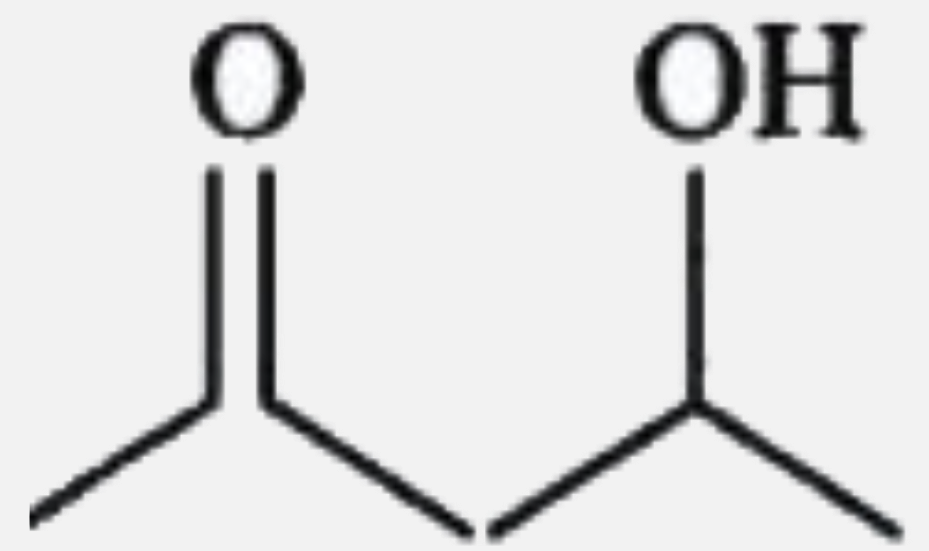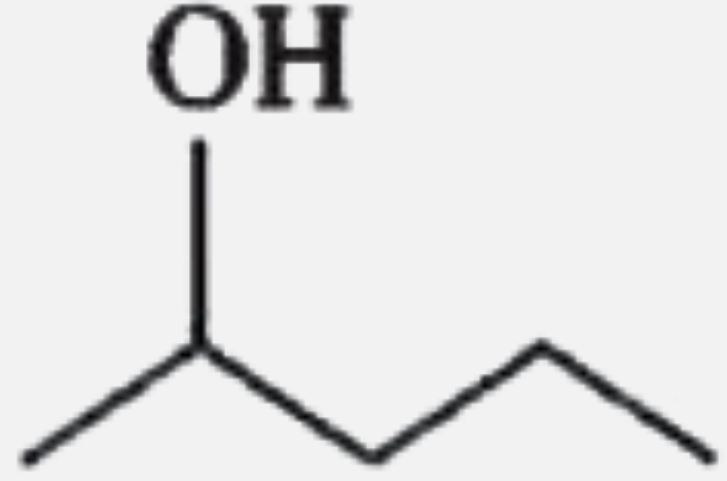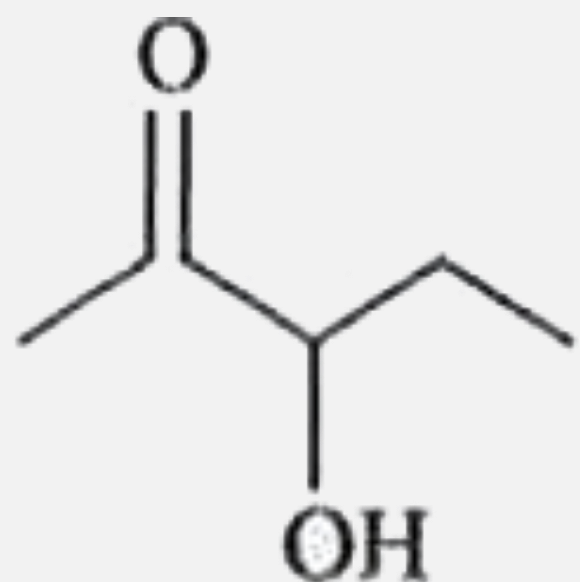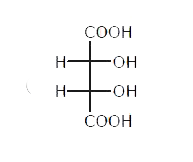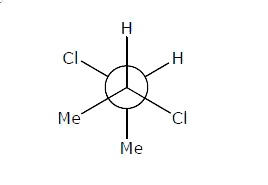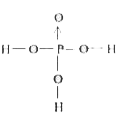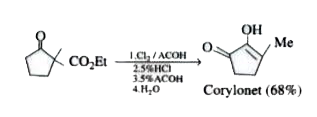Explore topic-wise InterviewSolutions in .
This section includes InterviewSolutions, each offering curated multiple-choice questions to sharpen your knowledge and support exam preparation. Choose a topic below to get started.
| 18501. |
What is "sulpha drugs" ? |
| Answer» Solution :These are SYNTHETIC CHEMOTHERAPEUTIC AGENTS having SULPHONAMIDE GROUP in their structure . | |
| 18502. |
Which of the following will be most redily dehydrated in acidic conditions ? |
|
Answer»
|
|
| 18503. |
What is a secondary cell? Write the equation for the cathodic reaction of lead storage battery ? |
|
Answer» Solution :The cell which can be recharged by PASSING current in opposite direction and can be USED again. Cathodic reaction is `PbO_(2(s))+SO_(4(aq))^(2-)+H_((aq))^(+)+2E^(-)RARR PbSO_(4(S))+2H_(2)O_((l))` |
|
| 18505. |
Which reaction is possible |
|
Answer» `I_2+2NaBrrarrBr_2+2NaI` |
|
| 18506. |
Which among the following gives nitrogen on heating: |
|
Answer» `NaNO_3` |
|
| 18507. |
What is the name given to higher members of aliphatic carboxylic acids ? |
| Answer» SOLUTION :FATTY ACIDS | |
| 18508. |
Which of the following is simple lipids ? |
|
Answer» FAT SOLUBLE vitamins |
|
| 18509. |
Which one of the following represents the electronic configuration of the most electropositive elements? |
| Answer» Answer :B | |
| 18510. |
Which of the following will not show optical isomerism. |
|
Answer» `C1- CH= C=C=CH-C1` |
|
| 18511. |
What is Raoult's law ? How can molar mass of non-volatile solute be determined with its helo ? |
| Answer» SOLUTION :For ANSWER CONSULT SECTION 9. | |
| 18512. |
Which of the following reactions do not involve oxidation reduction ? I. 2Cs+2H_(2)Orarr2CsOH+H_(2) II. 2CuI_(2)rarr2CuI+I_(2) III. NH_(4)Br+KOHrarrKBr+NH_(3)+H_(2)O IV. 4KCN+Fe(CN)_(2)rarrK_(4)[Fe(CN)_(6)] |
|
Answer» l, II `H_2O + e^(-) rarr OVERLINE(O)H +1/2H_2`(Reduction) Hence, redox REACTION. II. `e^(-) + Cu^(2+) rarr Cu^(1+)` (Reduction) `2I^(-) rarr l_2 +2e^(-)` (Oxidation) Hence, redox reaction. II. `N overset(+)(H)_4 rarr NH_3` (No change in oxidation number) Hence, reaction is not a redox reaction. IV. No change in the oxidation number of either `Fe_(2+)` or `CN^(-)` in both reactant and PRODUCT, hence, reaction is not a redox reaction. |
|
| 18513. |
Which of the following will not form ether ? |
|
Answer» `R-X + C_6H_5ONa to` |
|
| 18514. |
There is a salt of weak acid and weak base the K_(a) of the acid is greater than the K_(b) of the base hence |
|
Answer» Degree of HYDROLYSIS is independent of the concentration of the salt solution `K_(h) = (K_(w))/(K_(a)K_(b)) = ([HA][BOH])/([A^(-)][B^(+)]` and `h = sqrt((K_(w))/(K_(a)K_(b)))` Hence degree of hydrolysis is independent of the concentration of the salt taken. `{:("Further",A^(-)+H_(2)O hArr HA+OH^(-),,....(i)),(,B^(+)+H_(2)O hArr BOH + H^(+),,...(II)):}` Since `K_(a)` of HA is more than `K_(b)` of BOH so the extent of backward reaction in (i) is greater than the extent of of hydrolysis of `B^(+)` Hence choices (a), (c) and (d) are correct while (b) is incorrect. |
|
| 18515. |
Which kind of isomerism is possible for a complex[Co (NH_3) _4Br_2]Cl ? |
|
Answer» GEOMETRICAL and IONIZATION |
|
| 18516. |
What is the denticity of co-ordination compound used for the treatment of lead poisoning? |
| Answer» Solution : In Lead poisoning EDTA (Ethylene diammine TETRAACETATE) is USED as LIGAND which is hexadentate i.e., the denticity of EDTA is 6. EDTA binds with metal in octahedral MANNER by two N-atoms and four acetate oxygen atoms. | |
| 18517. |
Which of the following undergoes dehydrobromination at a fastest rate? |
|
Answer»

|
|
| 18518. |
Transition metals from |
|
Answer» Ionic BONDS |
|
| 18519. |
Which of the following metals will not react with a solution of CuSO_(4) |
|
Answer» Fe Hg is less reactive than Cu it comes below Cu in the REACTIVITY SERIES. |
|
| 18520. |
The weight (in gram )of pure potash Alum (K_(2)SO_(4).Al_(2)(SO_(4) )_(3).24H_(2)O ) which contains 0.64kg oxygen is . (Atomic weight of K = 39 , S = 32 ,Al = 27 ) |
|
Answer» |
|
| 18521. |
The structure of orthophosphoric acid is |
|
Answer»
 It is a tribasic acid i.e., 3-hydroxyl group are present. Phosphorus ATOM is in `sp^(3)` hybrid STATE. |
|
| 18522. |
Which of the following is an example of Tyndall effect? |
|
Answer» BLUE colour of sea WATER |
|
| 18523. |
Which polymers occur naturally ? |
|
Answer» STARCH and NYLON |
|
| 18524. |
Twomolesof heliumgasare takenoverthe cycleABCDA , asshown in theP-Tdigram Assuming the gas to be ideal the work doneon thegas in takingif from A to Bis - |
|
Answer» 200 R w = - 400 R` |
|
| 18525. |
Vapour pressure of chloriform (CHCI_(3)) and dichloromethane (CH_(2)CI_(2)) at 25^(@)C are 200 mm Hg and 41.5 mm Hg respectively. Vapour pressure of solution obtained bu mixing 25.5 g of CHCI_(3) and 40.0g of CH_(2)CI_(2) at the same temperature will be (Mlecular mass of CHCI_(3)=1199.5 u and molecular mass of CH_(2)CI_(2)=85u |
|
Answer» <P>173.9 mm Hg Moles of `CHCI_(3)` `("Mass")/("Molecular weight")=((25.5g))/((119.5g mol^(-1)))=0.213 mol` Moles of `CH_(2)CI_(2)=((40g))/((85gmol^(-1)))=0.470 mol` `X_(CHCI_(3))=((0.213))/((0.213+0.470))=0.31` `X_(CH_(2)CI_(2))=(0.470)/(0.213+0.470)=0.69` `P_(T)=P_(CHCI_(3))^(@)X_(CHCI_(3))+P_(CH_(2)CI_(2))^(@)X_(CH_(2)CI_(2))` =`200xx0.31+41.5xx0.69 =62+28.63=90.63 mm of Hg |
|
| 18526. |
Which one of the following does not correctly represent the correct order of the propertyindicated against it? |
|
Answer» `Ti lt V lt Cr lt Mn :` INCREASING MELTING points |
|
| 18527. |
Which of the following vitamins can be stored in our body ? |
| Answer» Answer :D | |
| 18528. |
Which is NOT true about valence bond theory (VBT) ? |
|
Answer» It cannot explain the spherical PROPERTIES of COMPLEX compounds. |
|
| 18529. |
Which complex of Co^(2+)will have the weakest crystal field splitting |
|
Answer» `[Co(CN)_(6)]^(4-)` `I^(-) LT Br^(-)lt SCN^(-) lt CL^(-) lt S^(2) lt F^(-)lt OH^(-) lt C_(2)O_(4)^(2-) lt H_(2)Olt NCS^(-) lt EDTA^(4-) lt NH_(3) lt en lt CN^(-) lt CO` ( Strongest) |
|
| 18530. |
Which of the following carbohydrates is used in silvering of mirrors? |
|
Answer» Glucose |
|
| 18532. |
Which is/are the correct method for separatig a mixture of benzoic acid p- methylaniline & phenol |
|
Answer» `OVERSET(AQ.NaHCO_(3))(to) overset(aq.NaOH)(to)` 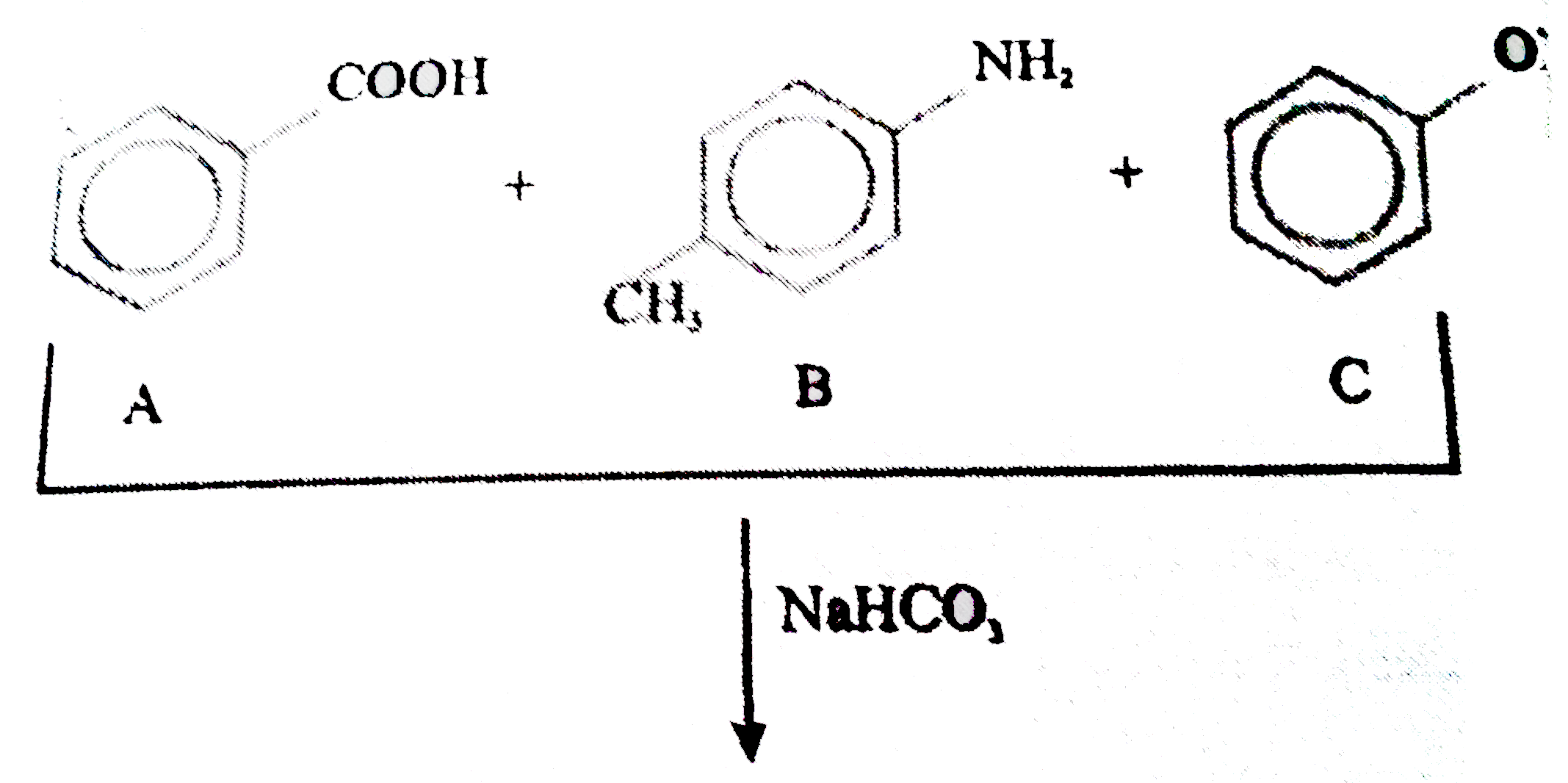 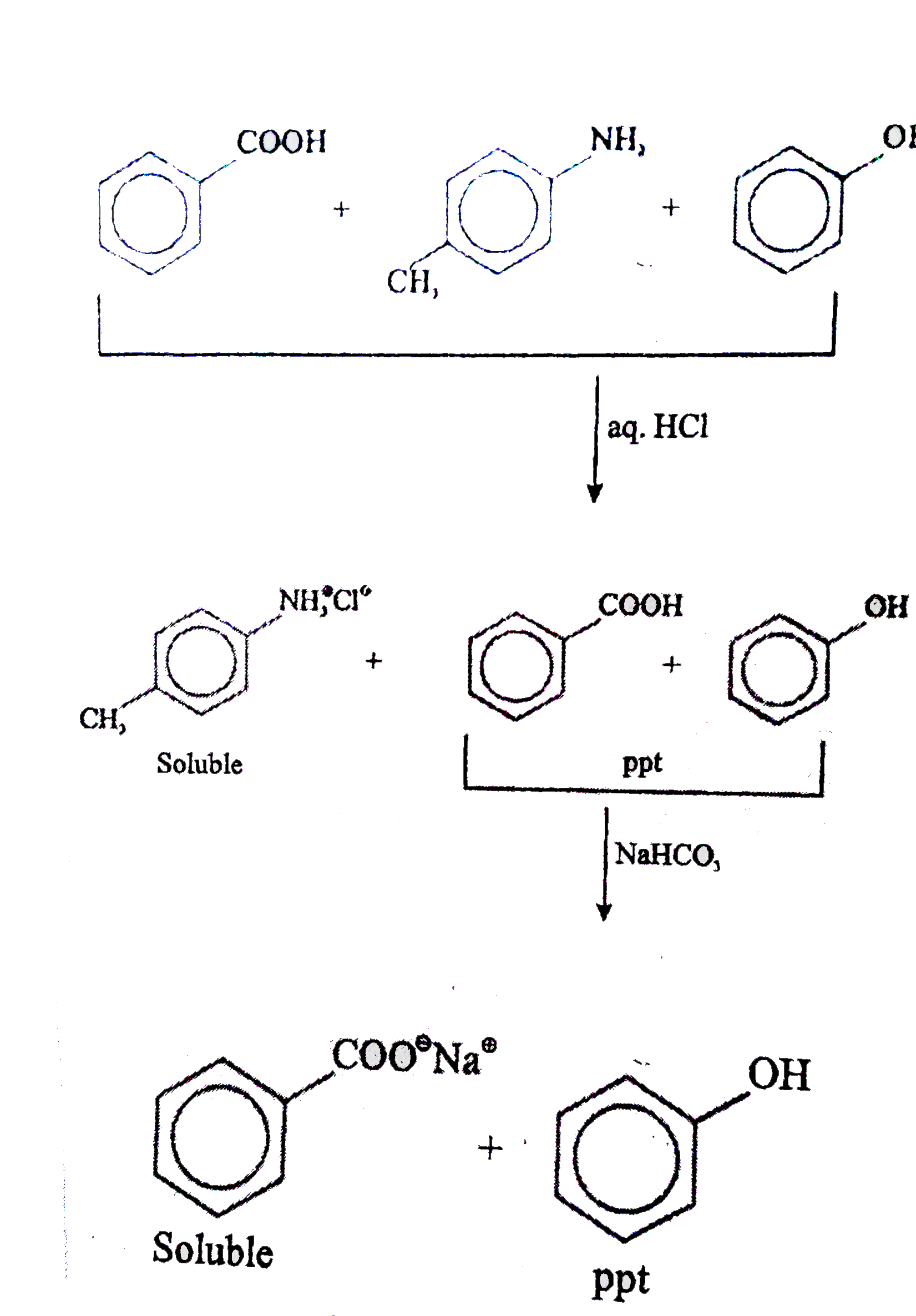
|
|
| 18533. |
XeF_6 on partial hydrolysis gives |
|
Answer» `XeOF_4` only |
|
| 18534. |
Which one of the following vitamins cheks night blindness |
|
Answer» A |
|
| 18535. |
Which of the following reactions is/are correctly represented |
|
Answer»

|
|
| 18536. |
Which of the following acids is used Friedel-Craft's reaction- |
|
Answer» `HClO_4` |
|
| 18537. |
The sharp melting point of crystalline solids is due to ……. |
|
Answer» a regular ARRANGEMENT of constituent PARTICLES observed over a short distance in the CRYSTAL LATTICE. |
|
| 18538. |
Which Vitamin deficiency leads to cheilosis? |
|
Answer» VITAMIN`B_(12)` |
|
| 18539. |
Which of the following complex is a low spin complex ? |
|
Answer» `K_(4)[Fe(CN)_(6)]` |
|
| 18540. |
When 10 ml of 0.1 M acetic acid (pK_(a) = 5.0) in titrated against 10 ml of 0.1 ml of 0.1 M ammonia solution (pK_(b) = 5.0), the equivalence point occurs at pH |
|
Answer» `5.0` `pH = -(1)/(2)[log K_(a) + log K_(w) - log K_(b)]` `= (1)/(2)[-5 + log(1 xx 10^(-14)) - (-5)]` `= -(1)/(2)[-5-14+5] = -(1)/(2)(-14) =7` |
|
| 18541. |
alpha-helix is a secondary structure of proteins formed by twisting of polypeptide chain into right handed screw like structure. Which type of interactions are responsible for making the alpha-helix structure stable? |
|
Answer» Peptide bonds between - `NH_2` group and `CO` groups of adjacent carbon chains |
|
| 18542. |
Which of the following carboxylic acids is most reactive toward esterification ? |
|
Answer» `(CH_(3))_(3)C COOH` |
|
| 18543. |
Using crystal field theory, draw energy level diagram, write electronic configuration of the central metal atom/ion and determine the magnetic moment value in the following : (i) [CoF_(6)]^(3-),[Co(H_(2)O)_(6)]^(2+),[Co(CN)_(6)]^(3-) (ii) [FeF_(6)]^(3-),[Fe(H_(2)O)_(6)]^(2+),[Fe(CN)_(6)]^(4-) |
Answer» SOLUTION : `N=0, mu=sqrt(n(n+2))=0`. Hence, it is diamagnetic. (ii) `FeF_(6)^(3-)" has "Fe^(3+)=3d^(5)=t_(2g)^(3)e_(g)^(2),n=5,mu=sqrt(5(5+2))=sqrt(35)=5.92 BM` (`F^(-)` is a weak field ligand, `Delta_(0)ltP`) `[Fe(H_(2)O)_(6)]^(2+)` has `Fe^(2+)=3d^(6)=t_(2g)^(4)e_(g)^(2), n=4, mu=sqrt(4(4+2))=sqrt(24)=4.9BM` (`H_(2)O` is a weak field ligand, `Delta_(0)ltP`) `[Fe(CN)_(6)]^(4-)" has "Fe^(2+)=3d^(6)=t_(2g)^(6)e_(g)^(0), n=0, mu=0` (diamagnetic), (`CN^(-)` is a STRONG field ligand, `Delta_(0)gtP`) |
|
| 18544. |
Which is/are correct about electronegativity order of the following elements ? |
| Answer» Answer :A | |
| 18545. |
Which of the following is an example of liquid dishwashing detergent ? |
|
Answer» `CH_(3)(CH_(2))_(10)-CH_(2)OSO_(3)^(-)Na^(+)` |
|
| 18546. |
Which of the products is formed when acetone is reacted with barium hydroxide solution? |
|
Answer»

|
|
| 18547. |
What weight of CO_(2) will contain same number of oxygen atoms as are present in 3.6 g of water ? |
|
Answer» 8.8 g ` = (3.6)/(18) XX 6 xx 10^23 ` molecules ` = 1.2 xx 10^23 ` molecules No. of OXYGEN atoms ` = 1.2 xx 10^23` Now ` 2 xx 6 xx 10^23` atoms of oxygen in `CO_2` = 44G `1.2 xx 10^23` atoms of oxygenin `CO_2` ` = (44)/(2 xx 6 xx 10^23)xx 1.2 xx 10^23` 4.4 g |
|
| 18548. |
Which is the correct repesentation for K = C_1/C_2 relation ? |
|
Answer» The distributioncoefficient K |
|
| 18549. |
What type of aldehydes and ketones undergo aldol condensation? |
| Answer» Solution :ALDEHYDES and ketones CONTAINING one or more `alpha`-hydrogen/s, i.e., ACETALDEHYDE, ACETONE, ETC. | |
| 18550. |
Using the data given below find out the strongest reducing agent. E_(Cr_(2)O_(7)^(2-)|Cr^(3+))^(Theta)=1.33V,E_(Cl_(2)|Cl^(-))^(Theta)=1.36V E_(MnO_(4)^(-)|Mn^(2+))^(Theta)=1.51V,E_(Cr^(3+)|Cr)^(Theta)=-0.74V |
|
Answer» `Cl^(-)` So Cr is STRONG reducing agent. `Cr to Cr^(3+) +3e^(-)` * Cr EASILY oxidize and hence it is strong reducing in nature. `Mn^(2+) lt Cl^(-) lt Cr^(3+) lt Cr`. |
|
